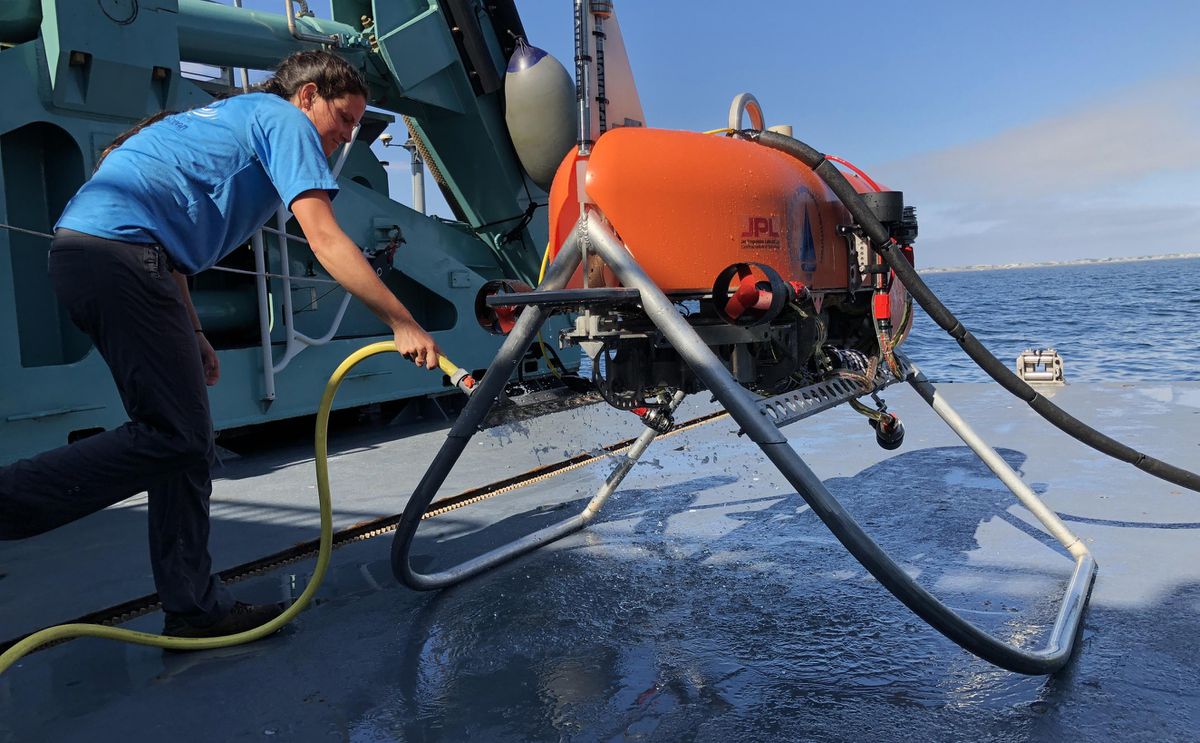
A Robot Like This Could Swim At Jupiter’s Water-Spewing Moon
The Orpheus submersible robot is being developed by Woods Hole Oceanographic Institute and JPL to ... [+] explore the deep ocean autonomously.NASA/JPL-CaltechWonderful things may float in the ocean of Europa, a moon of Jupiter.Ever since two NASA Voyager spacecraft flew by the system in the 1970s and spotted strange cracks in Europas ice, scientists around the world have speculated about what lies underneath.Europa is quite far from the sun, but stays warm thanks to its orbit hugging close to the mighty gas giant planet. Whats more, theres an ocean under its surface that periodically spurts water into space. The most optimistic of scientists sometimes speculate there could be microbes floating underneath there.A NASA mission called Europa Clipper may, if funding and development timelines hold, launch in 2024 to do an orbital survey with the latest instruments and potentially, to pick some landing spots for a future spacecraft. And unlike the rovers we are used to on Mars, this futuristic robot is going to have to swim. NASA's Europa Clipper could launch as soon as 2024 if the spacecraft and funding are ready to go.NASA/JPL-CaltechSwimming is unlike anything weve done on other planets before, but NASAs Jet Propulsion Laboratory (JPL), the National Oceanic and Atmospheric Administration (NOAA) and the Woods Hole Oceanographic Institution (WHOI) are doing a test of an autonomous robot this month. Lovingly called Orpheus, the desk-sized robot takes advantage of technology that flew aboard JPLs Perseverance rover that landed on Mars in February.Percy (while landing) and a drone helicopter that it toted to Mars, called Ingenuity, both made use of navigation systems that tracked surface features while they were in the air. Knowing what was underneath them helped the robots autonomously figure out where they were. The same tech could help Orpheus navigate during testing near the U.S. East Coast in the Atlantic Ocean, in preparation for Mars.These tests will put us on track to start future dives ... and intelligently seek out exciting regions of high biological activity, Russell Smith, robotics mechanical engineer at JPL, said in a statement.Orpheus is a technology demonstration working in safer waters close to home. The scientists say they are excited for its potential for demonstrating operations on other worlds, but we also have to remember that such a development could take a long time. Assuming that Europa Clipper makes it to Jupiter safely in 2031 and works there for a couple of years, a swimming explorer likely wouldnt follow until the 2040s or so.Still, the team says its exciting to be at the forefront of autonomous ocean tech that could better answer the question about whether Earths life is unique, said Tim Shank, the biologist leading WHOIs hadal (deep-ocean) exploration program, in the same statement. It is a profound thing to think that this expedition could be the stepping stone to new discoveries about our own planet, Shank said, adding, Before we can explore Europa or any other ocean world, we have to better understand our own home first.
……Technology Space
Comments
Leave a comment in Nestia App